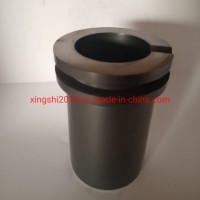Product Name: Dexamthasone Sodium Phosphate for injection Model NO.: injection Pharmaceutical Technology: Chemical Synthesis Type: Organic Chemicals Shape: AMP State: Liquid Suitable for: Adult Usage Mode: Injection Application: Anti-Inflammatory Use: for Injection Dosage: 1ml:5mg Trademark: sunbiolab Transport Package: 5AMPS/Box Specification: 1ml: 5mg Origin: China Product Description Product DescriptionProduct NameDexamthasone sodium phosphateStrengh1ml:5mgPackage5amps/box;10 amps/boxStorageStore in acool and dry place below 25ºC, protected from light.Shelf Lift36 monthRouteFor I.V.INDICATIONS AND USAGEBy intravenous or intramuscular injection when oral therapy is not feasible:1. Endocrine DisordersPrimary or secondary adrenocortical insufficiency (hydrocortisone or cortisone is the drug of choice; synthetic analogs may be used in conjunction with mineralocorticoids.where applicable; in infancy, mineralocorticoid supplementation is of particular importance). Acute adrenocortical insufficiency (hydrocortisone or cortisone is the drug of choice; mineralocorticoid supplementation may be necessary, particularly when synthetic analogs are used). Preoperatively, and in the event of serious trauma or illness, in patients with known adrenal insufficiency or when adrenocortical reserve is doubtful. Shock unresponsive to conventional therapy if adrenocortical insufficiency exists or is suspected. Congenital adrenal hyperplasia Nonsuppurative thyroiditis Hypercalcemia associated with cancer2. Rheumatic Disorders As adjunctive therapy for short-term administration (to tide the patient over an acute episode or exacerbation) in: Post-traumatic osteoarthritis Synovitis of osteoarthritis Rheumatoid arthritis, including juvenile rheumatoid arthritis (selected cases may require low-dose maintenance therapy) Acute and subacute bursitis Epicondylitis Acute nonspecific tenosynovitis Acute gouty arthritis Psoriatic arthritis Ankylosing spondylitis3. Collagen Diseases During an exacerbation or as maintenance therapy in selected cases of: Systemic lupus erythematosus Acute rheumatic carditis4. Dermatologic Diseases Pemphigus Severe erythema multiforme (Stevens-Johnson syndrome) Exfoliative dermatitis Bullous dermatitis herpetiformis Severe seborrheic dermatitis Severe psoriasis Mycosis fungoides5. Allergic States Control of severe or incapacitating allergic conditions intractable to adequate trials of conventional treatment in: Bronchial asthma Contact dermatitis Atopic dermatitis Serum sickness Seasonal or perennial allergic rhinitis Drug hypersensitivity reactions Urticarial transfusion reactions Acute noninfectious laryngeal edema (epinephrine is the drug of first choice).6. Ophthalmic Diseases Severe acute and chronic allergic and inflammatory processes involving the eye, such as: Herpes zoster ophthalmicus Iritis, iridocyclitis Chorioretinitis Diffuse posterior uveitis and choroiditis Optic neuritis Sympathetic ophthalmia Anterior segment inflammation Allergic conjunctivitis Keratitis Allergic corneal marginal ulcers7. Gastrointestinal Diseases To tide the patient over acritical period of the disease in: Ulcerative colitis (systemic therapy) Regional enteritis (systemic therapy)8. Respiratory Diseases Symptomatic sarcoidosis Berylliosis Fulminating or disseminated pulmonary tuberculosis when used concurrently with appropriate antituberculous chemotherapy. Loeffler's syndrome not manageable by other means. Aspiration pneumonitis9. Hematologic Disorders Acquired (autoimmune) hemolytic anemia. Idiopathic thrombocytopenic purpura in adults (IV only; IM administration is contraindicated). Secondary thrombocytopenia in adults Erythroblastopenia (RBC anemia) Congenital (erythroid) hypoplastic anemia10. Neoplastic Diseases For palliative management of: Leukemias and lymphomas in adults Acute leukemia of childhood11. Edematous States To induce diuresis or remission of proteinuria in the nephrotic syndrome, without uremia, of the idiopathic type or that due to lupus erythematosus.12. Miscellaneous Tuberculous meningitis with subarachnoid block or impending block when used concurrently with appropriate antituberculous chemotherapy. Trichinosis with neurologic or myocardial involvement.13. Diagnostic testing of adrenocortical hyperfunction.14. Cerebral Edema associated with primary or metastatic brain tumor, craniotomy, or head injury. Use in cerebral edema is not asubstitute for careful neurosurgical evaluation and definitive management such as neurosurgery or other specific therapy.






























